The Fastest Atlantic Boat Crossing: A Historical Analysis
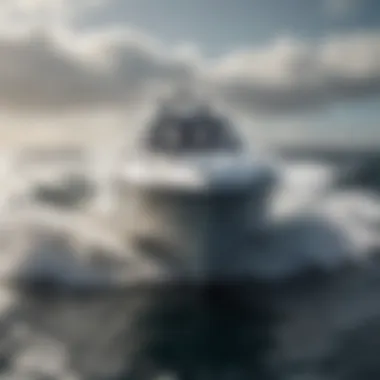
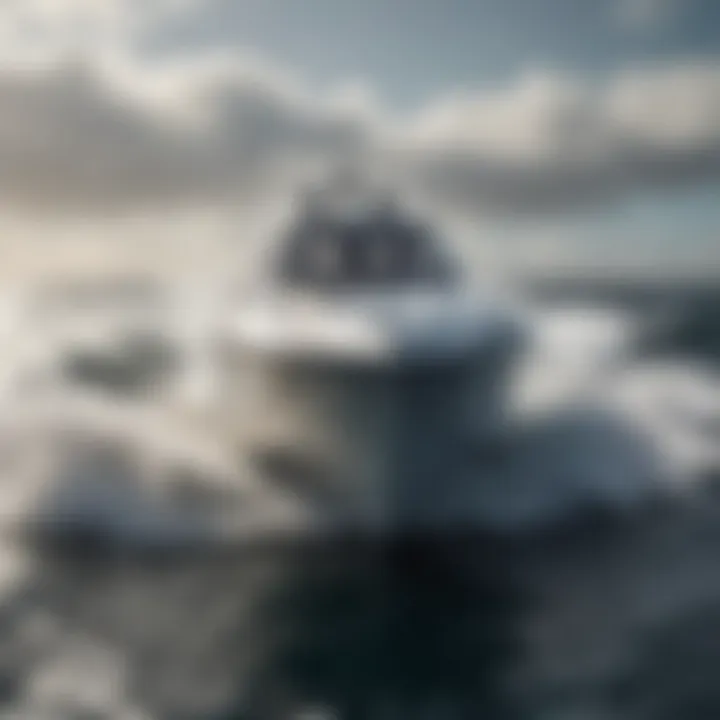
Intro
Crossing the Atlantic Ocean has long beckoned adventurers, offering sailors both a challenge and a chance to showcase their skills. The drive to set records in this vast marine expanse goes beyond mere competition; it's a testament to human perseverance, technological advancements, and the intricate dance between nature and skill. In the following sections, we delve deep into the various techniques, skills, safety measures, and gear essential for anyone considering their own Atlantic adventure.
Techniques and Skills
When setting out on the journey of sailing across the Atlantic, it is vital to develop a solid foundation of techniques and skills. The mastery of these will not only enhance performance but also ensure safety throughout the voyage.
Fundamental Techniques for Beginners
New sailors venturing into the world of ocean crossings must first familiarize themselves with the basic techniques of sailing. An understanding of wind direction, sail trim, and basic navigation is crucial to making progress smoothly.
- Sail Handling: Learning how to efficiently raise, lower, and trim sails is fundamental. A beginner should practice these skills in various wind conditions before venturing into open waters.
- Tacking and Gybing: These maneuvers allow a sailor to change direction effectively. A solid grasp of tacking upwind and gybing downwind can save time and energy.
- Basic Knotting Skills: Knowing essential knots, such as the bowline or cleat hitch, can be the difference between a secured sail and a disaster at sea.
Advanced Skills for Experienced Athletes
For those who have set foot on the tidal waters a few times and are ready to chase records, honing advanced skills is key. Experienced sailors often rely on a deeper knowledge of the ocean's moods and their boat's performance under diverse conditions.
- Weather Forecasting: Reading the clouds and understanding barometric pressure can greatly influence a sailor's strategy. Relying on intuition, combined with meteorological understanding, can provide a winning edge.
- Navigation Techniques: Mastery over nautical charts, GPS, and even celestial navigation can guide experienced sailors towards their destination, even when technology fails.
- Speed Optimization Tactics: Familiarity with your vessel's performance in different waves and wind can help you adjust your strategy for speed. This involves a keen awareness of a sailboat's balance, weight distribution, and the use of hydrofoils.
"In sailing, the wind can be your best friend or fiercest foe; understanding it gives you the power to steer your journey."
Safety and Gear
Safety is paramount when embarking on long-distance voyages. Preparing with the right gear and knowledge can turn a daunting crossing into a steadfast journey.
Essential Safety Measures in Watersports
The open ocean presents unpredictable challenges and hazards. Here are some key safety measures every sailor should prioritize:
- Life Jackets and Personal Floatation Devices (PFDs): Always wear a life jacket, as it is your first line of defense.
- Emergency Beacons and Flares: Ensure you have the means to send distress signals. A personal locator beacon or EPIRB can save lives.
- Communication Devices: Having radios certified for marine use ensures you can reach help even miles from land.
Gear Reviews and Recommendations
Selecting the right gear makes all the difference. As trends evolve, so does the technology behind boating gear:
- Sails: Kevlar sails are now lighter and more durable than traditional materials, reducing weight and increasing speed.
- Navigation Systems: Integrated touch-screen systems can provide real-time updates and ease of use, allowing sailors to focus on the journey rather than just data.
- Safety Equipment: Invest in top-tier safety gear including inflatable life rafts that maximize survival chances in emergencies.
For more extensive information on sailing preparations, check resources at Wikipedia and Britannica.
As we explore the depths of the fastest Atlantic crossings, it becomes clear that every journey is marked by the skills acquired, the safety measures taken, and the innovations embraced. This quest is as much about reaching a destination as it is about becoming a more competent and confident sailor.
Prelims to Atlantic Crossings
The Atlantic Ocean, with its vast expanse, has been a hub for adventurers and sailors since time immemorial. The topic of Atlantic crossings is not merely about traversing water; it embodies a rich tapestry of history, innovation, and human spirit. This section introduces the profound significance of these crossings, detailing both their historical context and how they have evolved over time, making them a focal point in maritime pursuits.
When we speak of the Atlantic crossings, we delve into a journey that has, for centuries, symbolized exploration and discovery. These expeditions have opened pathways, connecting distant shores and cultures. The significance goes beyond personal achievement; it reflects the evolution of seafaring itself. Sailors navigating this extensive waterway push the boundaries of nautical technology, adapting to various challenges such as weather, currents, and the sheer unpredictability of nature.
Why are Atlantic crossings important?
- They represent milestones in maritime history.
- They show human adaptability in the face of challenges.
- They drive technological innovations in boat design and navigation.
- They inspire new generations of sailors to take on ambitious journeys.
The commitment to mastering the Atlantic has led to noteworthy developments in boat construction and navigation techniques. Each crossing brings fresh perspectives and aspirations, underlining the need for progress and safety at sea.
In this article, the journey begins by recognizing how Atlantic crossings have evolved and shaped both history and current boating culture. As we probe deeper, we will explore the balance between tradition and modernity, understanding how technological advancements have transformed a simple crossing into a remarkable feat of endurance and innovation.
Historical Significance of Atlantic Crossings
In the annals of exploration, crossing the Atlantic holds immense historical weight. This journey has been a rite of passage for many explorers, pirates, and adventurers alike. Notable crossings include those of Christopher Columbus, who sought a new route to the East Indies and instead stumbled upon the New World. His voyages not only changed the course of history but also set the stage for future maritime explorations.
The historical significance extends beyond individual achievement; it encapsulates the very spirit of discovery. This audacity paved the way for empires, commerce, and cultural exchanges that shaped the modern world. Over time, the Atlantic became more than just a barrier; it transformed into a highway that connected nations.
Key Events to Remember:
- Columbus's 1492 voyage, leading to the encounter of two worlds.
- The establishment of the triangular trade route, which significantly impacted economic systems.
- The evolution of racing events that now chart the course for record-breaking crossings.
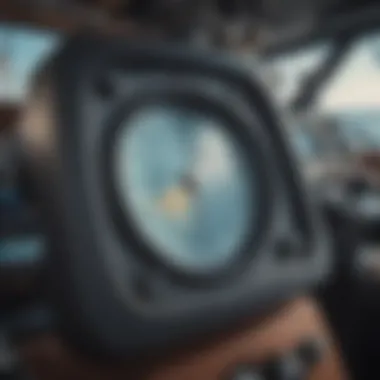
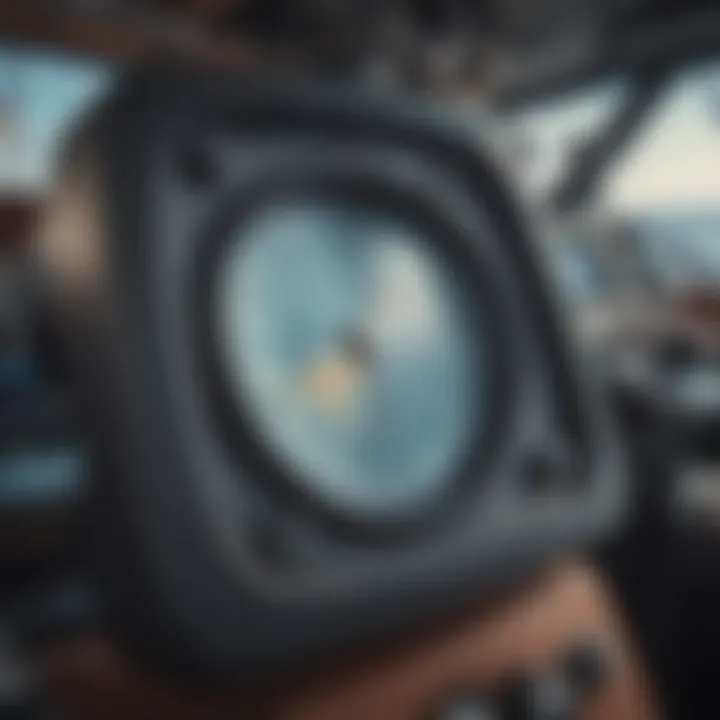
These crossings continue to resonate today, highlighting humanity's relentless pursuit of exploration and the push against the horizon. Each wave conquered is a step into the unknown, a testament to the enduring allure of the Atlantic.
The Evolution of Boat Design
The journey across the Atlantic has undergone a profound transformation in terms of boat design. Earlier vessels, crafted out of necessity and rudimentary materials, have given way to technologically advanced machines capable of tackling the demanding conditions of the ocean. This evolution reflects our growing understanding of materials, hydrodynamics, and the principles of sailing.
During the Age of Exploration, ships like the caravels and galleons were monumental in their time. Designed for long voyages, they combined sails with a sturdy hull, enabling sailors to navigate both nature's fury and the open sea. Unlike today’s sleek and streamlined racing boats, these early ships were as much about endurance as they were about speed.
With technological advancements, the mid to late 20th century introduced innovations like fiberglass construction and hydrofoil designs. These new methods dramatically improved speed and stability, empowering sailors to attempt faster crossings.
Future boat designs continue to prioritize efficiency and performance, incorporating lightweight materials and smart technologies for navigation.
Innovation Highlights:
- Material Advances: Use of carbon fiber and composite materials to reduce weight.
- Hydrodynamics: Developing hull shapes that enhance speed and reduce drag.
- Automation: The rise of autopilot systems and navigational aids that improve crossing accuracy.
As we journey through the article, understanding the evolution of boat design will illuminate the synergy between technology and human ambition in conquering the Atlantic.
Record-Breaking Crossings
Record-breaking crossings of the Atlantic hold a special place in maritime history—they're not just about speed; they embody human ambition and innovation. The excitement surrounding these remarkable feats draws in a captivating blend of adventure, competition, and technological evolution. For those passionate about water sports, these crossings represent the zenith of nautical prowess, where skill meets cutting-edge technology. This section dives into the significance of record-breaking crossings, analyzing key figures, techniques, and the remarkable journeys that redefine what’s possible at sea.
Overview of Record Holders
When talking about record holders in Atlantic crossings, it’s impossible not to mention the likes of François Gabart and Ellen MacArthur. Gabart set a record in 2017, making it from New York City to Ouessant in just 6 days, 22 hours, 8 minutes aboard MACIF, a high-tech trimaran that showcases the pinnacle of modern marine design. Meanwhile, Ellen MacArthur's incredible 2005 feat—where she completed her journey in just under 71 days—continues to inspire many sailors. Her tenacity and resilience laid the groundwork for future sailors aiming for record times.
Key Points about Record Holders:
- François Gabart - Fastest record holder, 2017.
- Ellen MacArthur - Inspirational endurance and speed from 2005.
- Technological advancements - Innovations that enable record-breaking feats.
Notable Fastest Crossings
Several crossings have etched themselves into the annals of history due to their exceptional speed. A standout is the July 2020 crossing by Saildrone which utilized an autonomous USV (Uncrewed Surface Vehicle). It managed to traverse the Atlantic in a remarkable 32 days. Such advancements in automation and data collection reflect the direction the maritime industry is heading toward. These moments not only highlight human endurance but also the potential for technology to aid in achieving seemingly impossible goals.
"The ocean is a canvas for daring achievements—a symphony of sails, waves, and willpower where records are mere milestones on a much larger journey."
Techniques Used by Record Holders
Speed on the open ocean is not just a matter of having a fast boat; it's a carefully orchestrated symphony of techniques and strategies. Record holders employ specific methods to maximize their efficiency and velocity.
For instance, understanding wind patterns is crucial. Sailors often utilize weather forecasting technologies to map out optimal routes, taking advantage of strong ocean currents.
Some notable techniques include:
- Route Optimization: Choosing the path that coincides with the strongest winds.
- Trim Techniques: Adjusting the sails to maximize the boat's aerodynamics—this can make a world of difference.
- Crew Synergy: Effective teamwork, where every crew member is indispensable, can enhance racing performance.
As one dives into the actions of these accomplished sailors, it becomes clear that record-breaking crossings symbolize the perfect blend of human ambition and technological mastery. These crossings not only push the envelope of what is achievable but also engage a larger conversation about the future of sailing.
Technological Innovations
Technological innovations have propelled the world of Atlantic crossings into uncharted territories of speed, efficiency, and safety. As sailors push the boundaries of what is possible, these innovations have not only changed how boats are designed and operated but have also been crucial in enhancing the overall experience of long-distance sailing. The marriage of technology and seamanship has birthed advancements that reflect a deeper understanding of marine dynamics and navigational challenges.
Advancements in Marine Engineering
Marine engineering has achieved remarkable strides in recent years, fundamentally changing the construction and performance of sailing vessels. When examining modern yachts and racing boats, one cannot overlook materials like carbon fiber and Kevlar. These lightweight but incredibly strong materials have allowed boat builders to construct vessels that are both faster and more resilient to the unforgiving ocean environment.
Gone are the days when wood and heavier metals dominated boat design. The sleek, contemporary forms and hull designs now showcase both artistry and engineering prowess. Each curve is meticulously crafted to minimize drag and maximize speed, allowing boats to slice through the water more efficiently.
For example, consider how hydrofoils—wings beneath the waterline—lift boats' hulls above the surface as they gain speed. This innovative feature reduces resistance, enabling astonishing high speeds that were once thought to be unattainable. Races that previously took weeks can now be shortened dramatically, allowing sailors to cross the Atlantic in record time.
Navigation Technologies and Their Impact
The winds of change in navigation technology have blown in, bringing with it a host of tools that revolutionize how sailors plot their courses. Traditional methods, relying heavily on celestial navigation or physical maps, have largely been replaced or enhanced by digital technology. GPS systems and sophisticated software now play an indispensable role in yacht navigation.
Not only do these modern systems provide pinpoint accuracy regarding location, but they also incorporate weather tracking and predictive analytics. This ability to foresee weather changes can be a game-changer, allowing sailors to adjust their routes dynamically. Imagine a sailor consistently monitoring wind patterns and currents in real-time, making calls that could lead to days saved on the journey.
"With real-time data at their fingertips, sailors can make informed decisions that can mean the difference between victory and defeat."
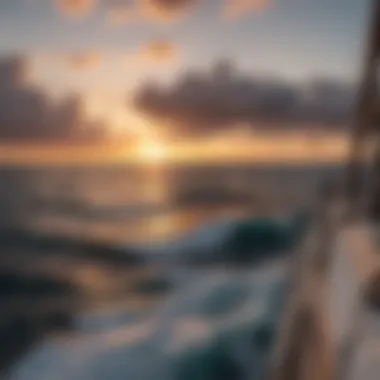
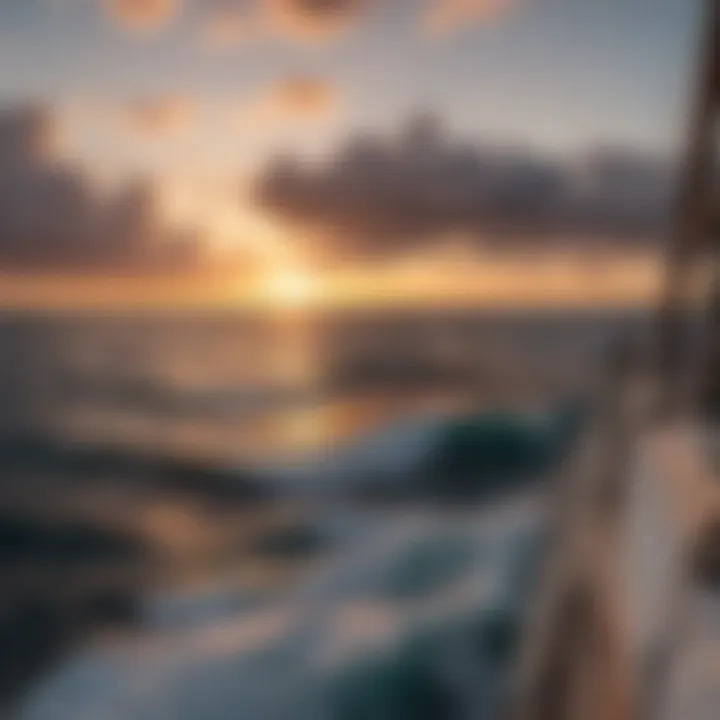
Moreover, electronic charts have transformed navigation into a seamless process. These high-tech maps allow users to zoom in and out, accessing granular details about potential obstacles in the water, be it submerged rocks or shifting sands. Using this technology ensures that sailors remain on a safe course while still striving for speed.
Sail Configuration and Materials
Sail configurations have also come a long way, evolving to meet the needs of speed and efficiency. The introduction of different sail types such as asymmetrical spinnakers has become common in competitive racing—favoring speed over traditional squarer sails.
Sail materials, like Mylar and other polymers, have seen vast improvements in their handling characteristics and durability. This not only decreases weight but also offers sailors greater control over sail shape, allowing for better performance across a wide range of wind conditions.
An important aspect worth noting is the compounding effect of these modern sails. As their efficiency improves, teams can sail closer to the wind, radically reducing transit times. More aerodynamic designs and innovative rigging techniques allow for a higher top speed without compromising stability.
In essence, as technology continues to evolve and merge with traditional craftsmanship, the potential for faster and safer crossings of the Atlantic becomes increasingly attainable. This fusion undeniably enhances the prospects for sailors aspiring to push beyond conventional limits.
Psychological Aspects of Long-Distance Sailing
Long-distance sailing presents not just a physical challenge but also a mental one. The psychological factors that come into play for sailors undertaking these vast oceanic journeys can be as pivotal as the boat’s speed or design. Understanding the mental landscape of long-distance sailing adds an essential layer of depth to the exploration of speed and adventure across the Atlantic.
Mental Preparation for Sailors
The very first hurdle a sailor faces is mental preparation. Before embarking on a weeks-long journey, sailors need a strong psychological framework. This begins with visualization techniques, where sailors conjure up the scenarios they might encounter. It's not just about dreaming of smooth sailing. Instead, thinking about rough waters, sudden squalls, or long, desolate stretches becomes integral to training the mind.
A disciplined mindset is crucial. Sailors often create routines that both regulate thoughts and build resilience. This ranges from physical exercises on land to practicing mental exercises aboard, including meditation or controlled breathing techniques.
Additionally, sailors connect with their crews, building rapport. Understanding each other's strengths and weaknesses creates a sense of unity. Constructing a supportive environment is essential; it enhances teamwork, which significantly reduces anxiety and stress.
Navigating Isolation at Sea
Isolation can be one of the great tests, both emotionally and psychologically. Once out in the open ocean, sailors can find themselves miles away from land, cut off from familiar faces and routines. Often, even experienced sailors grapple with feelings of loneliness, boredom, and at times, even despair.
To combat this, sailors develop strategies. For example, establishing daily rituals helps create a sense of normalcy. Whether it's a dedicated time for meals or regular check-ins with crewmates enhances social interaction, making isolation seem less daunting.
Sailors also lean into hobbies—reading books, journaling, or learning new skills can provide the mental stimulation needed during long stretches of monotony. The ocean can be mesmerizing, and thus, engaging with the surroundings through art, photography, or even keeping a log can help maintain mental well-being.
"The ability to find peace within oneself, amidst the chaos of the ocean, becomes a sailor’s greatest asset."
Moreover, modern technology now enables sailors to stay connected via satellite phones or social media, although reliance on these should be balanced with embracing the solitude of the sea. Finding focus amid isolation, learning to cope with the inherent challenges of long voyages, and maintaining motivation through sheer willpower are all indispensable skills.
Through exploring these psychological aspects, we gain insight not just into the mechanics of speed at sea but also into the inner workings of those who push the limits, forging ahead despite overwhelming odds.
Challenges Faced During the Crossings
Understanding the challenges faced during Atlantic crossings is crucial, not just for those who dream of sailing, but for anyone interested in maritime history and adventure. Each crossing represents a confluence of human determination and nature’s might. The choices made by sailors, whether they are seasoned veterans or newcomers, can determine the difference between survival and tragedy.
The Atlantic is not a forgiving body of water. Sailors contend with unpredictable weather systems, mechanical issues, and the very real threat of isolation. These challenges can arise at any moment, transforming a well-planned voyage into a harrowing ordeal. In this section, we will delve into two critical aspects: the impact of weather conditions and the potential for mechanical failures, alongside accompanying safety protocols that play a vital role in mitigating risk.
Weather Conditions and Their Effects
Weather stands as the primary nemesis for any sailor crossing the vast Atlantic. The ocean is a living entity, with its temperament dictated by wind, storms, and sea currents. From squalls to hurricanes, the variety of weather phenomena can drastically alter a vessel's course and its speed.
Sailors need to be weather-savvy; understanding how variables like wind direction and sea state interact can mean the difference between a smooth journey and a life-threatening situation. Strategies for managing these conditions include:
- Weather Routing: Sailors rely on advanced weather forecasting and routing systems to navigate around storms. Using apps and weather models, they can tweak their routes based on real-time data.
- Sail Adjustments: The ability to adjust sails effectively in changing winds can help maintain control and speed, an essential skill that comes from experience.
- Preparation for Emergencies: Carrying life-saving equipment and practicing emergency drills ensure crew readiness in the event of severe weather.
All these strategies provide sailors with the tools needed to contend with Mother Nature's wrath, yet even the best preparations can fall short.
Mechanical Failures and Safety Protocols
Mechanical breakdowns can catch even the most well-prepared sailors off guard. Whether it’s an engine failure or a rigging mishap, the impact of a malfunction can disrupt plans and jeopardize safety. Common issues include:
- Engine Failures: The loss of propulsion leads to vulnerability against waves and winds. This circumstance often necessitates reliance on backup systems or manual navigation.
- Electrical Systems Issues: Power is essential for communication and navigation. Loss of electrical systems can disorient a crew and cut them off from critical information.
In light of these potential failures, safety protocols become a sailor's best friend. Pre-voyage checks are paramount, ensuring that all equipment is in top shape before heading out.
Additionally, sailors must familiarize themselves with:
- Emergency Repair Kits: Having tools and spare parts onboard can allow for quick fixes to avoid becoming stranded.
- Protocols for Medical Emergencies: Knowing how to handle injuries or health problems away from land is critical, especially when isolation becomes a genuine risk.
- Communication Devices: Emphasizing the importance of reliable communication tools can mean the difference between life and death if a vessel runs into trouble.
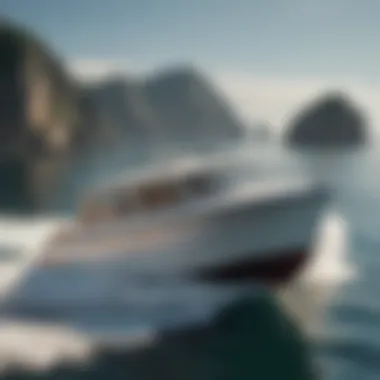
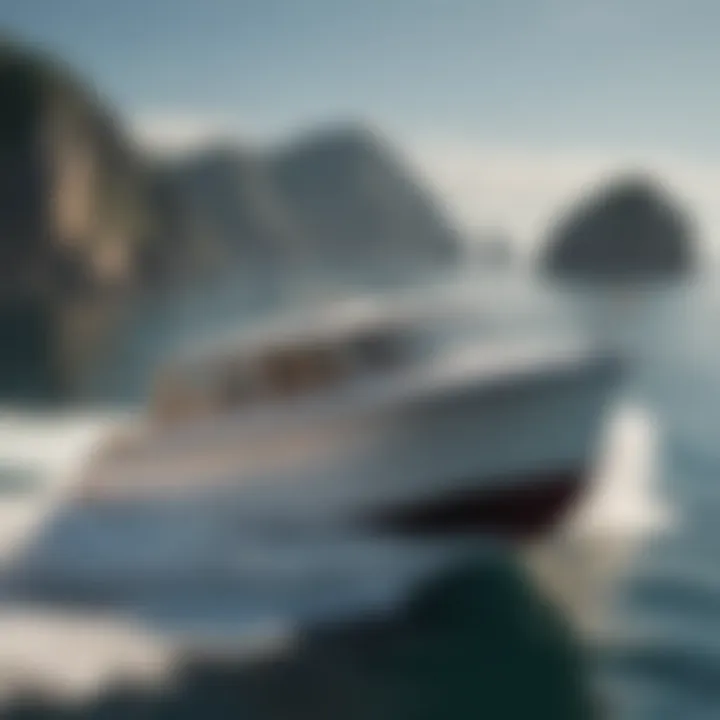
"Success is not final, failure is not fatal: it is the courage to continue that counts." – Winston Churchill
The Role of Competitions
Competitions in sailing extend beyond mere speed contests; they are vital in shaping the evolution of methods, vessel design, and the culture surrounding major boat races. Atlantic crossings, in particular, have become the pinnacle for sailboats, attracting daring adventurers and seasoned sailors alike. The competitive lens provides countless insights into challenges and solutions within this unique maritime arena.
Major Racing Events and Their Influence
Several prestigious events serve as benchmarks for aspiring sailors aiming to push the boundaries of Atlantic crossing speed. Races such as the Transatlantic Race and the Route du Rhum have garnered significant attention over the years, intensifying the desire to achieve remarkable timings. These events foster not only camaraderie among participants but also a fierce drive to innovate.
When sailboats embark on these adventures, they do so under the scrutiny of spectators and aspirants from around the globe. Performance is rigorously analyzed, and techniques put to the test, encouraging competitors to learn from each other and to brainstorm novel strategies. The adrenaline rush that comes with competition drives inventors and sailors alike to enhance their skills and refine their equipment. Innovations are often birthed in the crucible of competition.
- The historical influence of these races cannot be understated:
- Established benchmarks for future crossings
- Paved the way for new technologies in boating
- Fostered a sense of community and mentorship among sailors
In essence, these competitions are the heartbeat of sailing culture, sparking a relentless pursuit of excellence.
Impact of Competitive Spirit on Innovation
The spirit of competition ignites a flame of creativity, propelling sailors to think outside the box. While the thrill of racing is exhilarating, it is the quest for innovation that truly transforms the landscape of sailing technology. Improved hull designs, optimized sail configurations, and sophisticated navigation tools have all emerged as a direct result of this competitive environment.
For instance, the introduction of carbon fiber materials has revolutionized how boats are constructed, leading to lighter, faster vessels. Technologies like GPS and satellite communication have also enhanced navigation and safety, allowing sailors to make real-time adjustments based on weather conditions and sea state.
"Innovation in sailing is not merely about speed; it's about finding solutions to challenges faced during the journey. Competition brings these challenges to light and fosters a culture of creative problem-solving."
Consider the following benefits of this competitive spirit:
- Encouragement of R&D: Racing events often lead to increased research and development funding, attracting engineers and innovators.
- Collaboration: Competitive teams collaborate on projects, sharing insights and building partnerships.
- Sustainability: Recent races have also pushed for eco-friendly designs, merging speed with environmental responsibility.
In summary, the interplay of competition and innovation ultimately leads to advancements that benefit not just elite racers but all sailors hoping to master the Atlantic waters. As history has shown, the quest for excellence drives marine engineering forward, shaping the future of sailing.
Future of Atlantic Crossings
The future of Atlantic crossings isn’t just about speed; it’s a confluence of technology, sustainability, and adventure. As more sailors set their eyes on crossing the vast waters of the Atlantic, the innovations and challenges they face paint a vivid picture of what lies ahead. Understanding these elements sheds light on the direction of maritime endeavors and their implications for both seasoned sailors and newcomers alike.
Predicted Trends in Boat Technology
When we talk about boat technology, it’s important to think outside the box. The next generation of vessels is likely to embrace sustainable materials and green technologies that make crossing the Atlantic not just faster, but also safer for the environment. Here are some trends to keep your radar tuned to:
- Hybrid and Electric Propulsion: As we see marine engines evolve, the use of hybrid systems could soon become the norm. Imagine powering your sailboat with both wind and solar energy.
- Smart Navigation Systems: Next-gen navigation tools may incorporate artificial intelligence. This means real-time adjustments based on changing weather conditions and currents, paving the way for more efficient routes.
- Advanced Materials: The use of lighter yet durable materials, such as carbon fiber, could revolutionize boat construction. This not only boosts speed but also enhances safety during turbulent weather.
- Autonomous Sailing Technology: While still in its infancy, the concept of unmanned boats navigating the Atlantic is gaining traction. This could allow for constant data collection as ships sail, opening new avenues for research and development.
"The advancement of boat technology is not just a dream of the future; it’s happening now. Those who can adapt will thrive in this new era of sailing."
— Marine Analyst
Challenges Ahead for Sailors
While the horizon is bright with possibilities, sailors also need to be aware of certain hurdles that may complicate their journeys. Here are some key challenges that you might face:
- Changing Environmental Conditions: With climate change, weather patterns are becoming increasingly unpredictable. Sailors must be ready to face rough seas and sudden storms, which can affect planned routes and crossing times.
- Increasing Competition: As more individuals and teams get involved in racing events, standing out becomes more difficult. Competitors must not only sail faster but also incorporate innovative techniques to maintain a competitive edge.
- Safety Regulations: As technology advances, new regulations around safety equipment and protocols are inevitable. This can pose challenges to boat owners trying to keep up with regulatory demands.
- Mental Fortitude: Beyond the tangible aspects of sailing, the psychological challenges remain significant. Long-distance trips can strain even the most experienced sailors, making robust mental preparation essential.
Ending
The conclusion of our exploration into Atlantic crossings does not merely serve as a summary, but rather a celebration of the human spirit in pursuit of speed, adventure, and mastery over the vast ocean. Each crossing is a testament to the ingenuity and tenacity of sailors who dare to chase the horizon, often pushing the boundaries of what is considered possible.
The Enduring Allure of the Atlantic
Since times immemorial, the Atlantic Ocean has been more than just a stretch of water; it represents a profound symbol of adventure and discovery. Its vast expanse has lured explorers, traders, and adventurers alike, creating stories that resonate through history. The allure of this mighty ocean stems not only from its beauty but also from the experiences it offers.
Crossing the Atlantic is a journey painted with challenges, from relentless storms to the ever-present risk of mechanical failure. However, for those who take the plunge, the rewards are plentiful.
- Camaraderie among sailors: The bond formed between sailors on such expeditions often lasts a lifetime. Sharing harrowing tales and celebrating victories creates a unique fraternity.
- Stunning vistas: The sheer beauty of the ocean and the horizon ignites passion. There’s a visceral thrill in witnessing the sun rising over a calm sea or the raw power of waves crashing against the bow.
- Historical significance: Each journey contributes to a tradition steeped in stories of iconic navigators who scaled these waters before us.
Reflections on Speed and Adventure
Speed in crossing the Atlantic is not just a statistic; it embodies the relentless pursuit of excellence. Breaking records serves as a challenge, pushing competitors to improve time and time again. This pursuit reflects a deeper philosophy that resonates among adventurers: the thrill of setting goals and smashing them through grit and determination.
The sensation of the wind in your hair, salt spray on your face, and the sight of a vessel slicing through waves is one that stays etched in the mind. Each crossing is not simply about getting from point A to B; it's a merging of technology, courage, and an unyielding spirit.
"To dare is to lose one's footing momentarily. Not to dare is to lose oneself." - Søren Kierkegaard
This quote captures the essence of what it means to cross the Atlantic, emphasizing that the adventure lies not just in the crossing, but in the audacity to venture beyond the known. Sailing across the Atlantic is a dance with nature, where every gust, wave, and cloud plays a role in a grand performance.















